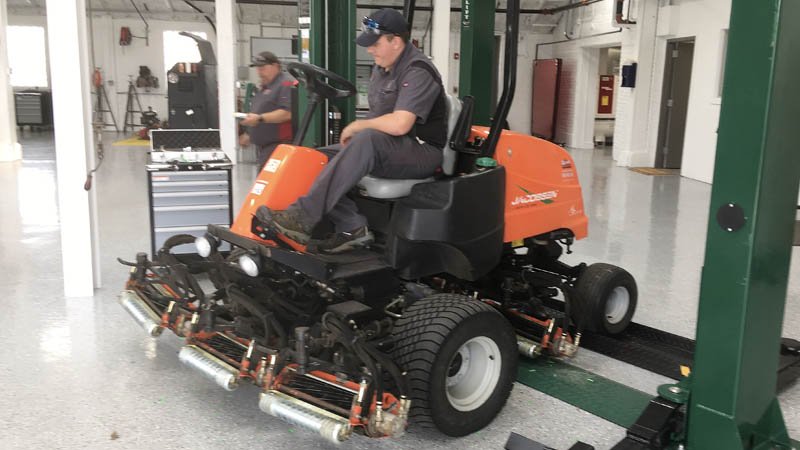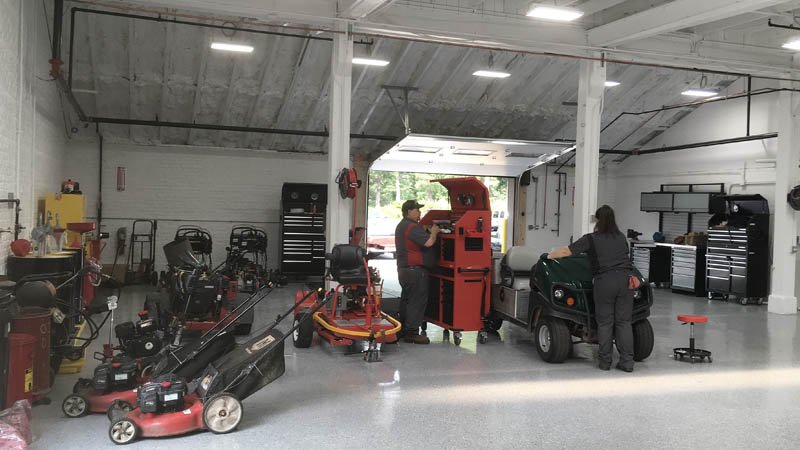
When asked to consult on construction of a new maintenance facility, Mike Vogt says one word continues to arise. Flow.
Flow of car traffic. Flow of foot traffic. Flow of mechanized equipment traffic.
"We examine the flow of people, from when they park their car and go into the maintenance building. That should be a straight line," said Vogt, a certified golf course superintendent and industry consultant. "Then it should be a straight line to the administrative area or staff room, then to where they get their assignments, then to where they get their equipment or tools should make another straight line."
Flow also includes the route for machinery out of the shop and onto the golf course, then again off the course, to the wash area and back to the shop.
"That line continues to the area where they fuel up machinery then go out onto the golf course, then backwards to where they blow off the machine, fuel it, clean it, then back to the storage area and to where they punch out."
Building a new facility gives everyone involved more flexibility than a renovation when constructing the perfect maintenance building. Still, flow was a keyword when the shop at Medinah Country Club in Illinois was reworked from last December through April.
Given a finite amount of space with which to work, the folks at Medinah laid out construction paper to scale to simulate work stations and whether everything would fit where they wanted it.
"When we did this shop renovation, we had a lot of decisions to make - insulation, lifts, equipment, work station set up," said Medinah equipment manager Brian Bressler. "We used to construction paper, the big rolls you can buy at Home Depot, to make sure everything fit in its footprint before we moved anything. What we were looking for was to make sure the shop flowed, make sure everything flowed."

The end result at Medinah was a shop with two lifts, a new entry way door and multiple work stations. The extra door and spacing of work areas meant a dramatic improvement in workshop flow.
"We knew we wanted to put two lifts in and we added a new door. We wanted to make sure we could get equipment in, work on it and get it out without interfering with other work stations," Bressler said.
‘We wanted to bring a piece of equipment in, get it on a lift and not take any more footprint than needed. Now, we can literally bring a piece of equipment in, put it on a lift and work on it, drive off that lift and go out the other entry door. The key is figuring out how to utilize space and maximize efficiency without being so cramped that we're crawling all over one another. Right now, we have two tractors in there, two tow-behind Lastecs, a twin-cylinder Kohler engine that is torn apart and we're working on some snow-blowing equipment, and we still have plenty of room to work without being bunched up together.
"A lot goes into planning this. We used four large rolls of paper. It took a lot of time to put the paper down and tape it together, but it worked out well"
There is more to a functional maintenance facility than a well-running shop. Areas used by employees, namely kitchen areas, breakrooms and locker facilities also deserve close attention.
When planning out kitchens and breakrooms, Vogt often looks to an industry outside the golf business for inspiration.
"A firehouse is a good example," he said. "In what we call industrial engineering, there is a focus on employees to make it as good an environment as possible for them because it's already hard enough to get workers. They want a safe area to store things, a comfortable place to have a meal in air-conditioning and a place where they can change in a safe environment where they won't get ripped off."
Flow also applies to the parking lot.
"It determines where you put dumpsters and how fuel delivery trucks enter and exit so they have the ability to get in and out without disrupting the day to day," Vogt said. "That's a hot topic for employees. They want to park their vehicles where it's safe, and they don't expect their cars to get beat up."


